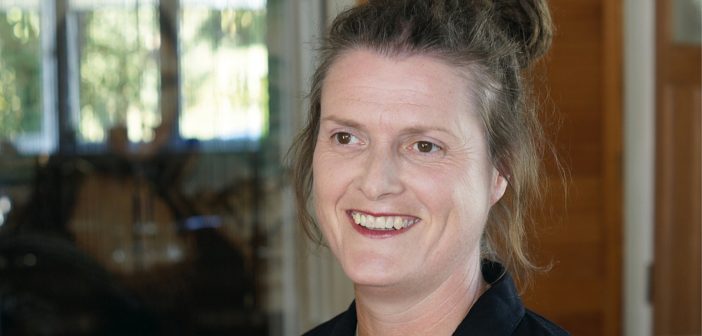By Rachael Goddard
Consensus on human-induced climate change is unequivocal. The International Panel on Climate Change (IPCC) states that 100 percent of global warming over the past 60 years is predominantly human caused.
Since the Kyoto Protocol in 1997, atmospheric carbon dioxide has risen from 364ppm to 417ppm. The current rise in CO2 is at least 300 times faster than the combined effect of natural processes during the last ten thousand years.
Scientists predict by the end of the century that, if we do not act now, forecasted 3-4°C temperature increases will be devastating. For New Zealand this will mean increased drought, as evidenced in Waikato with four out of the last five years being declared droughts. On farms, dry matter production was down by 20 percent over those 5 years. The Ministry for the Environment (NZ) predict that temperatures will be 1 degree higher within 25 years, and that the length of time in drought will increase. Spring rainfall is likely to decrease by 4 percent, whereas heavy rainfall events are likely to become more frequent.
There is consensus from climate scientists that temperatures must be stabilised at 1.5°C. Globally, this means halving greenhouse gas emissions every decade from now to approach net zero emissions by 2050.
In 2019, the New Zealand Government passed the Zero Carbon Bill, a piece of legislation which sets an ambitious target: to reduce all greenhouse gases (except biogenic methane) to net zero by 2050, and a reduction of between 24 percent and 47 percent of methane emissions by 2050. These targets are intended to keep global warming to within 1.5°C by 2050.
Public sector and crown entities in New Zealand are now either being ‘encouraged’ or ‘directed’ to track, certify and report on the greenhouse gas emissions to achieve carbon neutrality by 2025. For example, the DHBs have to measure, verify and report their emissions annually, set gross emissions reductions targets with longer-term reduction plans for the next decade and, by December 2025, offset any remaining emissions to achieve carbon neutrality. Other requirements include an immediate focus on phasing out the largest and most active coal boilers. Government agencies are also now required to purchase electric vehicles and reduce the size of their car fleet, and Green standards are required for all public sector buildings.
In addition, trail blazing legislation from the Government has rendered climate-related disclosures mandatory for 200 of New Zealand’s biggest businesses by 2023.
It is likely that the Government will adopt the Climate Change Commission recommendations (there were over 15,000 submissions on this), which, amongst many things, suggests that targets should be strengthened and our international agreements and commitments (such as the UN Climate Pledge and the Paris Agreement, to limit our global warming at 1.5°C) be revised and improved.
Prime Minister Jacinda Ardern declared a climate emergency last year and set the target for 100 percent renewable energy by 2035. She confirmed that the Government would be revising the climate pledge this year, coupled with a draft carbon budget that sets targets for reduction. The draft carbon budget aims to ensure that New Zealand will emit 5.6 percent less greenhouse gases than it did in 2018, each year from 2022 and 2025. Between 2026 and 2030 the target will jump to 14.7 percent for each year, and 25.9 percent for every year between 2031 and 2035.
The cost of being carbon neutral has been estimated by the Commission at around 1 percent of projected GDP, or $190m a year over the next four years, $11.5 billion ($2.3b a year) over the following five years and $21.5b ($4.3b a year) from 2030-35. Another report by NZIER, suggests it could cost $85 billion annually, 16% of projected GDP, by 2050.
The cost of not doing anything is predicted to be much higher. In 2020, Deloitte reported that inaction on climate change could reduce Australia’s economy by 6 percent, resulting in 880,000 fewer jobs by 2070, losing A$3.4 trillion (NZ$3.6t) over the next 50 years.
As these major and crucial changes are implemented, it is predicted that other sectors will also be obliged to report, track and offset their emissions. Now is the time for all businesses to start preparing for these changes.
Deloitte Head of Strategy and Sustainability Deborah Lucas said, “companies which fail to deliver on climate change commitments could end up facing reputational damage and lost sales”. She also suggests that “companies who don’t act proactively could find themselves forced to change by legislation and regulation”.
So, what can businesses do to prepare?
There are numerous tools online that can assist, such as the SBN climate action toolbox, which is free. This can help you understand the areas you need to focus on and the carbon calculators that you can use to track greenhouse gas emitting activities: travel, waste, water, energy, accommodation, hire cars, possibly gases and freight. The next step is to produce a plan or strategy for setting targets and reducing emissions. This needs to involve and engage staff and be embedded into practices. Offsetting is not mandatory at this stage, but likely in the future.
In 2018, a survey by IAG highlighted that climate change was important to 79 percent of New Zealanders. There is no doubt that this is one of the most pressing and challenging issues of our time, and we will need to adapt and act.
Rachael Goddard is the director of ECOES, which specialises in sustainability planning, mapping, frameworks, and tracking greenhouse gas emissions.





